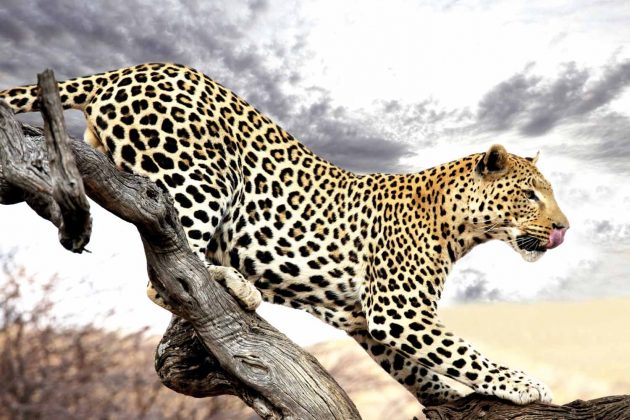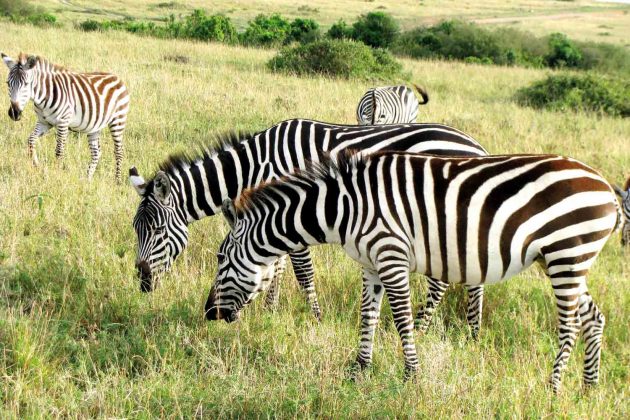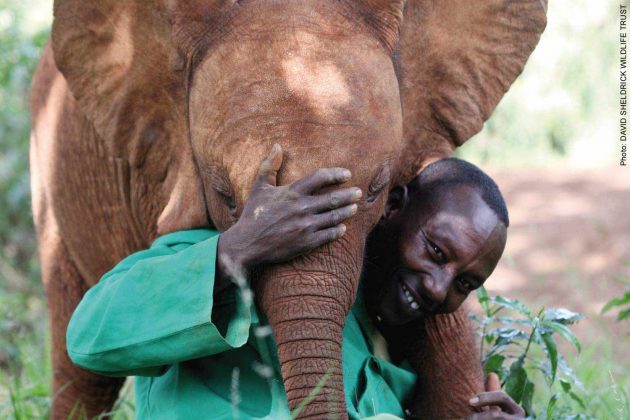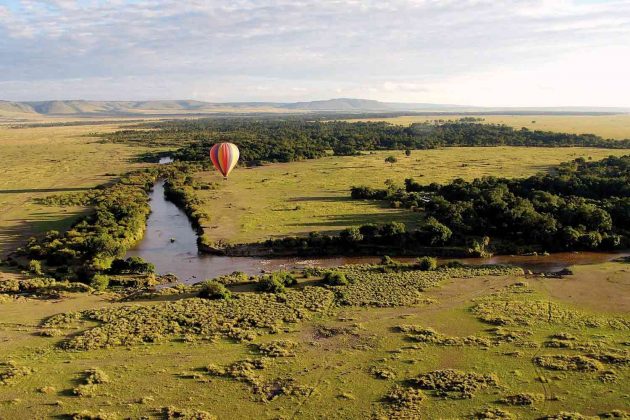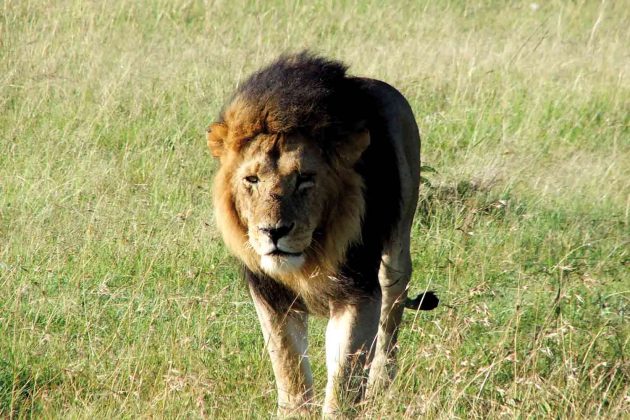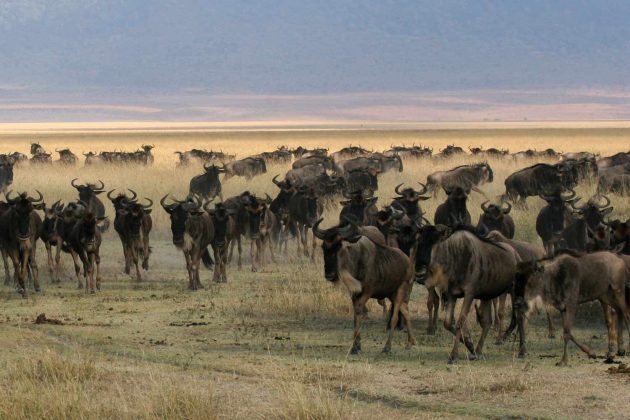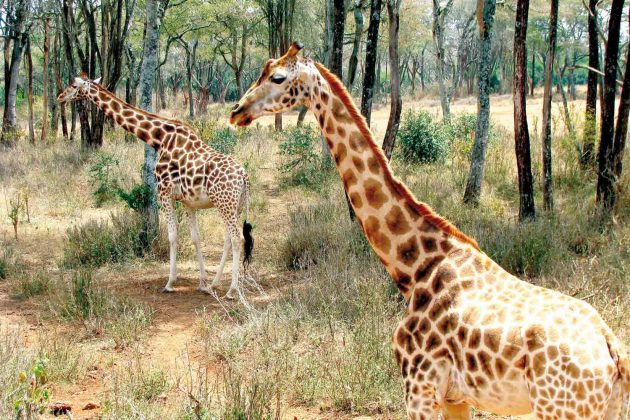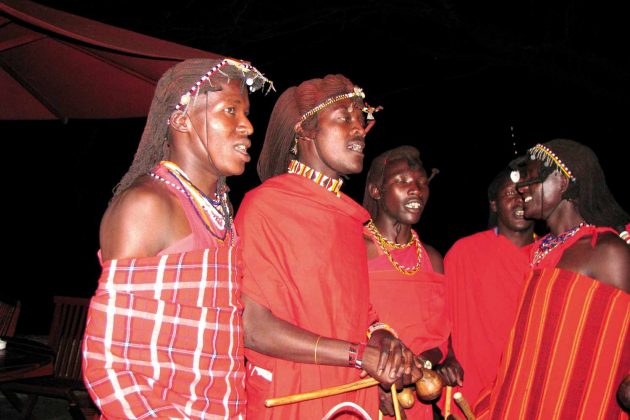If there is one country where animals are cared for with utmost love and attention, it is Kenya. In this country, you can find a number of homes where animals are looked after with affection. There are also numerous wild life parks where these creatures roam about in blissful abandon.
You can start your wild life journey from Nairobi, the capital of Kenya. Nairobi is a modern city with pulsating African culture and wildlife. With a good population of the city comprising Indians, you feel at home in Nairobi. Also, as you drive down the city, you will pass temples and gurudwaras. You can enjoy an authentic desi meal too in this African land as there are quite a few restaurants specialising in Indian cuisine. There are also a number of good hotels in Nairobi to suit all budgets. Two days in Nairobi and 2 – 3 days in Masai Mara is all you need to make your trip to Kenya worthwhile.
Several tour companies operate from here to show you around the city and also offer a packaged tour to Masai Mara National Reserve. However, before you embark on the journey, you can get a taste of the wild in Nairobi itself, which has the Nairobi National Park and animal orphanages.
The Nairobi National Park is within city limits. So visitors can not only enjoy the comforts of city life, but also drive down to the National Park nearby at their own convenience to enter an entirely different world. The tour to the National Park and the animal orphanage in it takes only a few hours. So if you leave for the park soon after breakfast, you can be back at the hotel for lunch!
The Nairobi National Park spans 117sq km. An interesting feature of this park is that the southern side of the park is open, so animals migrate uninhibited from this side especially during August-September. In the park, you can spot the rare and diffident black rhino [this is one place where these rhinos are found aplenty]. You can also catch a glimpse of lions, leopards and wild buffaloes along with giraffes, elands, Thomson gazelles, zebras, baboons and a wide variety of birds in the park. The only animal out of the big five [lion, leopard, elephant, rhino and buffalo] that you may not come across here is the elephant.
The orphanage inside the National Park is also an interesting place to study the moods and attitudes of animals as they recuperate after an injury or after they are orphaned. Lions, cheetahs, monkeys, hyenas and other animals arrive here in pain and discomfort. Over a period of time, they regain their health and composure, thanks to the caretakers of the orphanage, and feel completely fit to return back to their homes in the wild.
Close to the National Park is an orphanage for elephants and rhinos run by the David Sheldrick Wildlife Trust. A visit to this home is an experience you won’t forget easily. As you walk in, you will find rhinos lazily sleeping in their corners. If it’s lunch time for the elephants, you might get to see how lovingly the caretakers feed them and play with them. The elephants too, especially the little ones, keep nudging their care-givers to seek attention and love. For those interested, the caretakers share details about the elephants from the time of their arrival to their eating habits and emotional states of mind. It is fun to watch the elephants fool around the water tub or tease one another with their trunks. Sometimes a little one may just walk to you to wish you and pose for a photograph with you. It is pure pleasure to see these lovable creatures enjoying themselves without a care in the world. For a while, they make you forget your cares too.
To get up close and personal with the rare Rotschild giraffes, drive down to the Langata Giraffe Centre, which too is located near the Nairobi National Park. This home for the giraffes is where you can watch these long-legged animals tugging at branches of trees or stretching their necks to grab grass from your hands. These lovable creatures slowly pick their feed from you and allow you to pose with them for a perfect picture. Once they have had their fill, they return to the forest to roam around.
After you’ve mingled with the animals in Nairobi, it’s time to head to Masai Mara to rendezvous with the wild beasts in their natural habitat. Masai Mara is a journey that can be enjoyed on the road as you pass through the rift valley with streams and hills. If time is a constraint, you can even fly down to Masai Mara.
The Masai Mara Wildlife Reserve is spread across 1510 sq km. It lies in the Great Rift Valley and its gaming activities are on the Valley floor. To stay, there are a number of resorts within the reserve and outside too. Many of these resorts are green, spacious and have well-laid pathways that lead to tree top viewing spots. From here, you can spot hippos lazily having a swim, vultures flying down and barbet monkeys jumping from one tree to another. At any time of the day, you can take a walk in the garden and observe the activities of the animals at close quarters.
The resorts arrange for two-hour safari rides to the reserve early in the morning and in the evening. You are sure to spot not only the big five but also hyenas, cheetahs, foxes, wildebeests, zebras, giraffes, and gazelles. The reserve has birds in every size and colour. With the birds of prey totalling 53, and spotting one is easy.
As you start your early morning ride you will pass through open savannahs under the canopy of a large sky not yet lit up with sunlight. You will see hot air balloons with tourists taking off to get an aerial view of the reserve. Spaghetti trees and those with vultures on the branches, ready to fly down for a meal, may also arrest your attention. You may pass a variety of animals from the deer family with their distinct horns, gracefully standing on the fields. Zebras too with their beautiful stripes are found grazing in the company of wildebeests.
As the morning unfolds animal activity comes into full view. Be alert with your camera lest you miss unique scenes like two bulls fighting, little elephants following their mothers, cubs cosily curled up near a lioness, a lion ravenously biting into the carcass of a wildebeest, hyenas stealthily waiting to feed on the leftovers, a rhino playing hide and seek with the curious visitors and a running cheetah scaring gazelles walking together.
A visit to Masai Mara is infinitely more thrilling than watching an exciting documentary on TV. You witness interesting episodes from the life of the wild beasts. At peace in their surroundings and pursuing their daily chores unmindful of the presence of visitors, the animals seem to teach mortals a lesson on survival and merging with the environment.
The best time to visit Masai Mara is July – August as this is the season of migration. Thousands of wildebeests along with zebras, gazelles and other animals march 600 miles from the Serengeti plains of Tanzania to Masai Mara in the north in search of greener pastures. It is a wondrous sight to watch the beasts tread in hoards towards their destination. You will never get tired or bored clicking pictures of the ‘Great Migration.’
Once they finish with their feasting and the grass is almost gone, the wildebeests return to Serengeti in October – November. This great exodus of the animals lures visitors from all over the world to Masai Mara in July and Serengeti in October. As the sun sets over the Mara, its golden hue falls over trees, birds, beasts and the Masais, the brave locals in their red robes who move around fearlessly in the animal land. Back at the resort, these Masais entertain you with their songs and rhythmic steps as you enjoy your dinner. In the night, as you close your eyes, the animal world along with the Masais of the Mara may flit across in your vision before you are lulled off to sleep.
Quick Facts on Kenya
- Location: Nairobi is the capital of Kenya, which is in East Africa and Masai Mara is in the south western part of Kenya.
- Known for: Wildlife and handicrafts.
- Currency: Kenyan Shilling; 1$= 70 K Sh [approximately].
- Best time to visit: July – October.
- To carry: Yellow fever certificate, umbrella, sun screen lotion, good walking shoes, binoculars and camera.
- To shop for: Ebony, wood carvings and masks, precious stones like amber, tanzanite and tsavorite beaded jewellery.
This was first published in the June 2011 issue of Complete Wellbeing.


